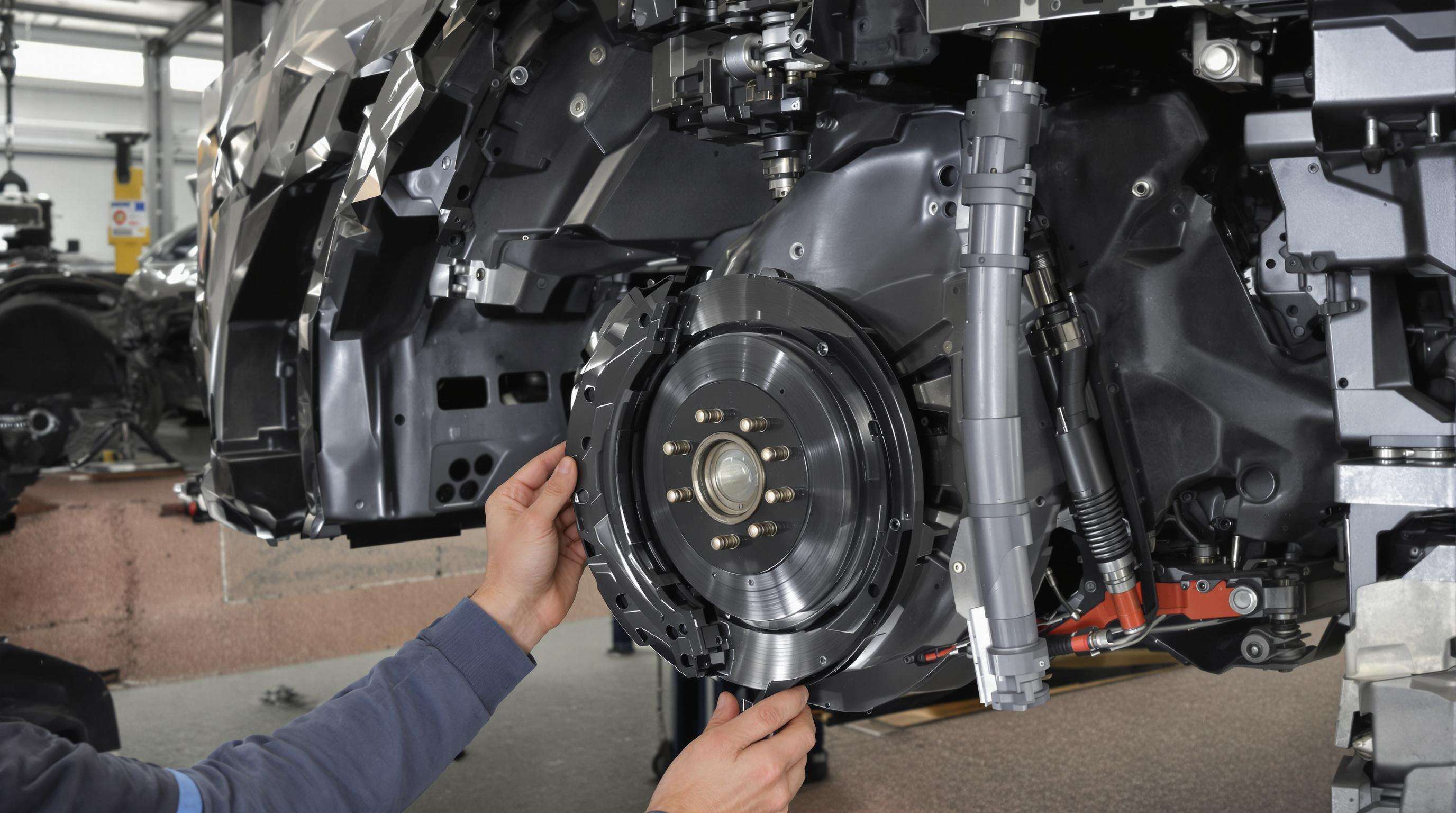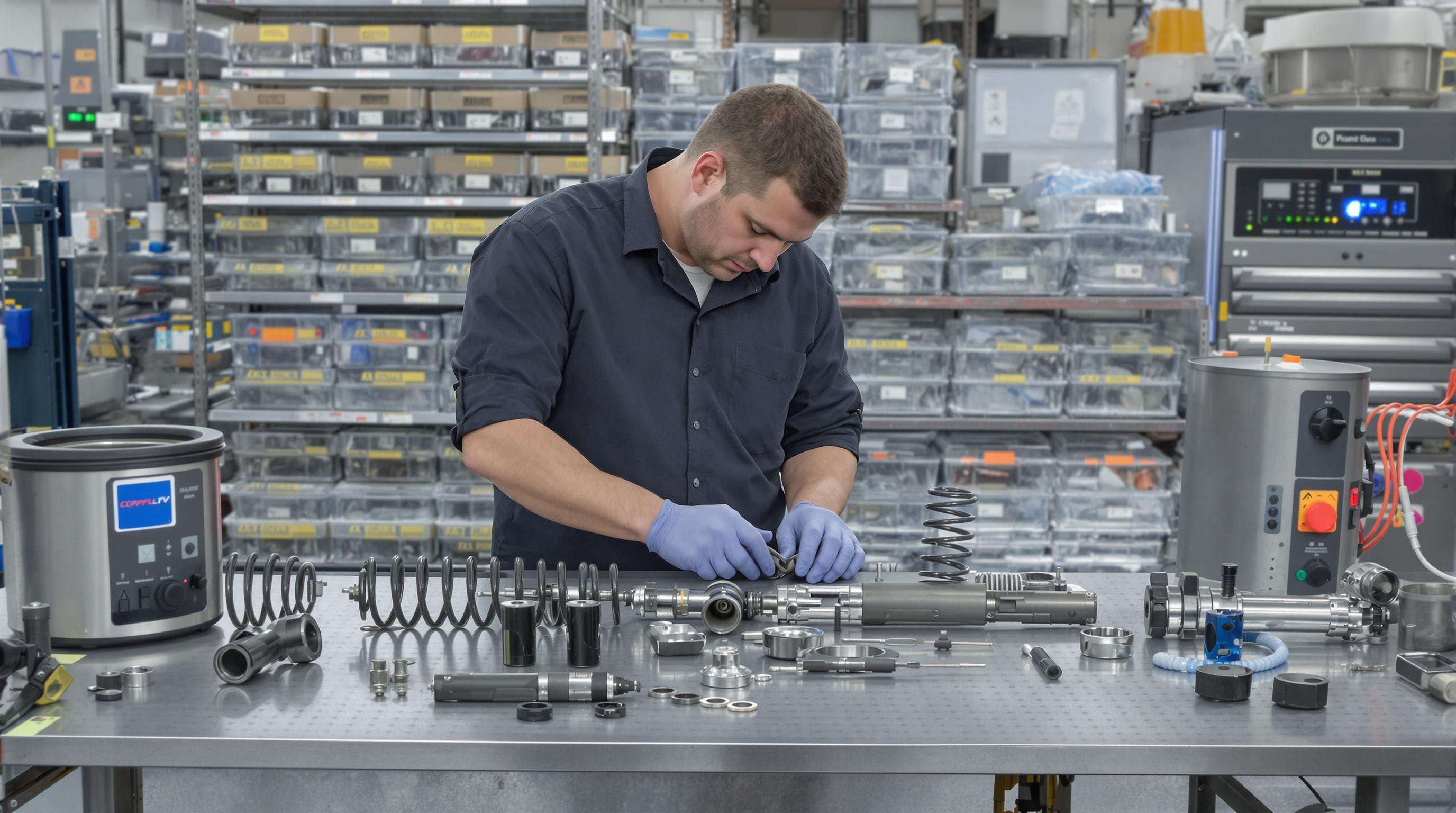
When it comes to designing replacement car parts with circular principles in mind, the goal is pretty straightforward: cut down on waste while getting the most out of what we already have. The key elements here are using tough materials that last longer, building things in modules so they can be swapped out individually, and creating standard connections between different parts. What makes this work so well is that these components aren't just throwaways after one use. Mechanics can take them apart without special tools, fix what needs fixing, or even retrofit older models with newer versions. For example, many European manufacturers now design brake systems that fit across several model years. This kind of thinking keeps parts in circulation much longer than traditional methods, which means fewer resources going into landfills and ultimately a smaller carbon footprint for the entire automotive industry.
When it comes to car parts modifications, design for disassembly plays a big part in making recycling easier. With DfD principles, mechanics can take apart different materials such as aluminum, rubber, and various plastics without needing special equipment. Many top manufacturers are now going with monomaterial builds these days. Think about those single polymer spoilers and bumpers we see on newer models. These designs let whole components get recycled together instead of having to sort through multiple materials. According to research published in 2024 on material innovations, this approach cuts down on recycling contamination problems by around 40 percent when compared to older designs that mixed several materials together.
When it comes to the automotive industry, the move toward circular economy principles is changing how things work in the aftermarket component space. About 58 percent of suppliers have started mixing recycled materials into their products these days, especially when making performance exhaust systems and suspension kits. What's interesting is that standardized mounting systems are becoming more common too. Car enthusiasts can actually swap out stuff like brake components and aerodynamic additions from one vehicle to another instead of buying brand new parts all the time. This not only saves money but also helps keep those components in circulation longer, which makes good environmental sense for everyone involved in the long run.
Data point: 30% of vehicle weight can be recycled effectively with proper design
Vehicles designed with circular principles achieve 30% higher material recovery rates at end-of-life (Allied Market Research 2023). This efficiency stems from improved component labeling and polymer purity standards, particularly for modified parts.
When it comes to remanufacturing, we're talking about restoring those worn out car mod parts back to almost brand new condition. Most of the original materials stay intact too around 85% actually. For things like turbochargers and fuel injectors, these reman parts hit the same performance benchmarks as factory originals, so modified cars run just as reliably. A report from Mobility Engineering Tech points out something interesting: companies save between 35 and 40 percent on production costs when they go the reman route, all while keeping that same level of performance people expect.

A European specialist demonstrated that remanufactured coilover systems achieve 98% of original damping performance using ultrasonic cleaning and laser-aligned spring calibration. This method diverts 12 tons of steel annually per workshop from landfills and offers track-ready components at 60% of retail cost, combining sustainability with high performance.
| Process | Key Innovation | Material Savings |
|---|---|---|
| Body kit refurbishment | UV-resistant resin infusion | 70–75% original fiberglass retained |
| Exhaust remanufacturing | Robotic TIG welding of catalytic converters | 90% stainless steel reused |
Reusing car modification parts reduces lifecycle carbon emissions by 48% compared to new manufacturing. With 30% of vehicle weight now recyclable through circular design, remanufactured components save 2.1 tons of CO₂ per ton of steel reused. Enthusiast communities report 28% lower annual ownership costs when integrating refurbished performance parts with selective new upgrades.
Getting composite materials like carbon fiber hoods and fiberglass spoilers back into circulation continues to pose real problems because of those tricky polymer mixtures. Most traditional recycling approaches manage to salvage just around 12 to maybe 15 percent of these composites effectively, while cleaning them up ends up costing about 40 percent more than making fresh products from scratch. The European Union recently passed laws requiring automakers to include at least 20 percent recycled plastic components in all new cars sold there by the year 2030. This regulation underscores how far behind we still are when it comes to separating different materials properly and establishing consistent recycling procedures across the board.
Advanced mechanical recycling and pyrolysis now enable closed-loop processing of mixed plastics from bumpers into reusable polymers, reducing global warming potential by 42% versus landfill disposal. Manufacturers are incorporating 30–40% recycled content into new spoilers using AI-assisted sorting to identify compatible material blends, maintaining aerodynamic performance while advancing circularity.
Creative workshops are repurposing metal modification parts into functional art:
Urban designers are integrating carbon fiber hoods and wings into public infrastructure. Prototypes show 60% greater weather resistance than concrete benches. A Barcelona initiative repurposed 200kg of recycled diffusers into bus stop roofing, demonstrating how circular design for car modification parts can support broader sustainability goals.
Today's engineering designs focus on modular setups where parts can be taken apart and fixed without too much hassle. Manufacturers now commonly incorporate corrosion fighting metals and tough plastic mixes into things like turbochargers and brake assemblies, which means these parts don't need replacing as often. According to recent industry reports from 2024, better surface treatments and improved materials have actually made components last around 40% longer than before. This kind of longevity helps manufacturers cut down on waste while still keeping vehicles running smoothly for extended periods.
Closed-loop manufacturing reprocesses 85% of machining scraps into new aftermarket components. AI-driven pattern nesting software optimizes sheet metal usage for body kits and spoilers, cutting fabrication waste by 22%. Refurbishment hubs now use standardized testing to ensure reused suspension arms and exhaust manifolds meet original performance specifications.
Manufacturers across the sector are increasingly turning to recycled materials for various parts these days. Take wheels made from recycled aluminum and those fancy aerodynamic bits constructed from what they call regenerated carbon fiber. A lot of companies now use post-industrial plastics in their cold air intake systems too – somewhere around 60 percent according to recent data. And get this, some automakers have started making interior trim from plastic collected from our oceans. Makes sense when we consider the EU rules pushing for at least 30% recycled material in every vehicle subsystem by the end of next decade. The regulations are definitely shaping how carmakers think about sustainability in design and production processes.
Government regulations are pushing car makers to adopt circular production methods, which is changing how parts get designed after initial manufacturing. The EU has set a target that by 2035, almost all new cars must be 95% recyclable under their End-of-Life Vehicles Directive. Meanwhile across in China, there's a rule requiring battery recovery rates above 90% for electric vehicles. These rules mean manufacturers have to rethink everything from exhaust systems to body panels so they can be taken apart more easily at the end of their life cycle. A recent industry report shows around 42 percent of component suppliers have ramped up research spending on these eco-friendly designs since early last year, showing just how seriously companies are taking these environmental mandates.
The 2024 Global Automotive Sustainability Index shows that around 73 percent of car enthusiasts care a lot about finding suppliers who run take back programs for old performance parts. Because people want this stuff, we're seeing some pretty cool tech developments too. Take those QR codes now being put on turbochargers and wheels for example. They let customers check exactly what percentage of materials are recycled and where those parts end up getting processed again. Looking at the bigger picture, the tuning market which brings in about $74 billion these days has changed completely. Manufacturers aren't just racing each other over horsepower numbers anymore. Sustainability stats matter just as much now when it comes to winning over customers.
Most industry watchers think around 40% of modified cars by 2030 will have second life electric vehicle batteries installed or interiors made from 3D printed recycled materials. Getting this mainstream won't happen overnight though. The market needs standard ways to track materials used in these parts, plus government tax breaks that actually match what original equipment manufacturers do with their circular economy efforts. There's also some new certification systems popping up recently, such as the Automotive Circularity Benchmark program. These aren't just fancy labels but real factors affecting how much people can sell their modified vehicles for later on. They're slowly changing what counts as green when it comes to car customization and repairs.
Circular design principles involve designing car modification parts to reduce waste and maximize their lifecycle, using durable materials, modular construction, and standardized connections.
Circular design helps extend the lifecycle of car parts, reducing resource consumption and minimizing landfill waste, ultimately lowering the industry's carbon footprint.
Remanufacturing involves restoring worn-out car modification parts to nearly new condition while retaining most of the original materials, ensuring performance and sustainability.
Recycling composite materials like carbon fiber and fiberglass poses challenges due to mixed polymer compositions, often resulting in lower recovery rates and higher costs compared to new production.
Consumer demand for sustainable design influences manufacturers to integrate eco-friendly practices, offer transparency through labeling, and prioritize sustainability alongside performance.

Copyright © 2024 Shenzer Automobile - Privacy policy